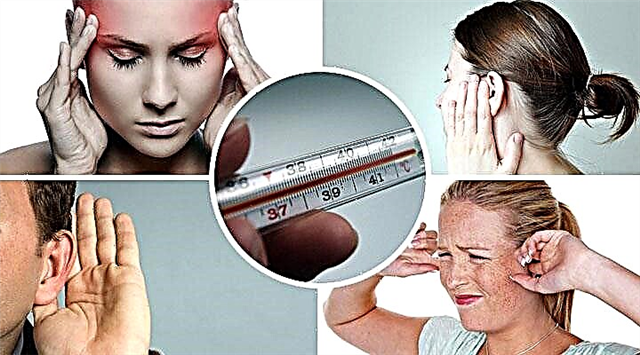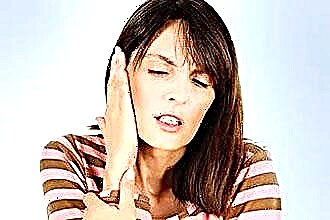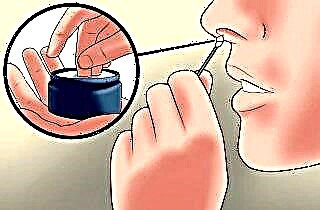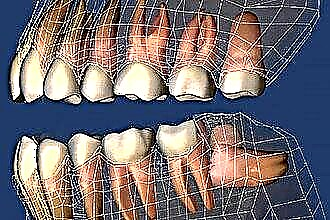Acute purulent otitis media is an otolaryngological pathology characterized by purulent inflammation in the middle ear: tympanic cavity, Eustachian tube, mastoid process. The cause of the development of ENT disease is bacteria and fungal pathogens, which actively multiply in the ear cavity when the immune defense is weakened. Untimely treatment of the disease leads to the development of stenosis, hearing loss, autophony, labyrinthitis, sepsis, etc.
The provocateurs of catarrhal processes in the mucous membranes of the middle ear are mainly streptococci, staphylococci, aspergillus, diphtheria bacillus and actinomycetes. The active development of pathogenic flora occurs in the case of a decrease in local immunity. The reason for this may be insufficient production of sulfur in the ear canal, which has a pronounced antimicrobial effect.
Etiology of the disease

According to statistics, purulent otitis media accounts for about 10% of all ear diseases. Most often, pathological processes in the tissues of the organ of hearing are observed in children under 3 years old, which is due to the anatomical features of the structure of some parts of the ear and reduced reactivity of the immune system. There are no specific causative agents of acute purulent otitis media. ENT pathology appears as a post-infectious or post-traumatic complication.
A decrease in the body's immune forces, provoking purulent inflammation in the ear, in 80% of cases is caused by an infectious lesion of the nasopharynx:
- sinusitis;
- sinusitis;
- flu;
- tonsillitis;
- adenoids.
Much less often, pathogenic agents penetrate the ear through injuries of the mastoid process. Even less often, the disease occurs in the case of hematogenous transfer of infectious agents during the development of measles, scarlet fever, tuberculosis, etc.
According to otolaryngologists, there are a number of factors that contribute to a decrease in the reactivity of the immune system. These include:
- hypovitaminosis;
- endocrine disorders;
- bad habits;

- antibiotic abuse;
- postoperative period;
- pathology of the nasal septum;
- common diseases (nephritis, diabetes mellitus).
Important! The constant flow of water into the ear canal leads to a change in the pH level in the ear canal, which is fraught with a decrease in local immunity.
Causes of otitis media in children
Infants are susceptible to the disease, which is associated with the structural features of the Eustachian tube. Up to three years, the process of formation of some parts of the hearing aid continues, and until the specified time, the Eustachian tube remains quite short, but wide. It is located almost perpendicular to the nasopharynx, therefore, pathogens and fluid almost freely enter the ear canal.
In pediatrics, there are several main reasons for the development of ENT pathology in children:
- flow of the milk mixture into the tympanic cavity;
- deficiency of trace elements and vitamin C;
- frequent rhinitis, sore throat, adenoids;
- insufficiently debugged thermoregulation mechanism;
- reduced reactivity of the immune system;
- ear injuries caused by improper toilet of the ear canal.
Infectious diseases in children are very common, provoking edema of the mucous membranes of the nasopharynx. Subsequently, the bacterial or viral flora enters the middle ear by the tubular route when sneezing or coughing.
Purulent inflammation of the organ of hearing is secondary in 90% of cases and is a consequence of untimely treatment of the catarrhal form of ENT disease.
Symptoms
The main sign of the development of purulent inflammation in the ear is the release of mucopurulent exudate from the ear canal. As a result of acute catarrhal processes in the mucous membranes of the organ of hearing, a thickening of the Eustachian tube occurs, as a result of which hearing acuity decreases. The classic signs of the development of the disease are:
- throbbing ear pain;
- headache;

- hyperthermia;
- purulent ear discharge;
- swelling of the ear canal;
- hearing impairment;
- ear congestion.
It is possible to recognize the development of the disease in an infant by other clinical manifestations. Suppurative inflammation causes severe pain, so the child may become restless or whiny. Due to increased pain during breastfeeding, the child refuses to eat. From the ear opening, yellowish masses are released, which have an unpleasant odor.
Important! Against the background of the development of autophony in children under 1.5 years of age, problems often arise during the period of speech formation.
Stages of development
Depending on where exactly the inflammation occurs, ENT disease can be right-sided (left-sided), intermittent, or bilateral. Acute left-sided purulent otitis media is no different from right-sided, except for the site of localization of the focus of inflammation. However, in medical practice, otolaryngologists are more likely to encounter bilateral ear pathology.
During the development of ENT disease, it goes through several main stages, namely:
- acute turbootitis - characterized by the onset of an inflammatory process in the mucous membranes of the main parts of the middle ear. The patient feels discomfort due to a feeling of congestion in the ear and the appearance of an echo effect;
- catarrhal inflammation - manifests itself in a sharp decrease in pressure in the ear cavity, which is associated with increased production of effusion. Due to edema of the affected tissues, liquid exudate from the ear canal is not evacuated, which leads to its accumulation in the tympanic cavity. As a result, the patient feels a transfusion of fluid inside the ear and discomfort caused by the protrusion of the tympanic membrane;
 preperforative inflammation - the process of transition of liquid exudate into thick purulent masses, which is caused by bacterial or fungal infection. In this case, the pain intensifies and begins to radiate to the temple, teeth, bridge of the nose, etc.;
preperforative inflammation - the process of transition of liquid exudate into thick purulent masses, which is caused by bacterial or fungal infection. In this case, the pain intensifies and begins to radiate to the temple, teeth, bridge of the nose, etc.;- perforation of the membrane - a breakthrough of the tympanic membrane, which occurs due to the high pressure of purulent masses on its surface. In the case of the development of acute right-sided (left-sided) purulent otitis media, pus begins to stand out from the ear. Due to this, the pressure inside the ear cavity decreases, which leads to a decrease in pain;
- reparative stage - accompanied by scarring of the tympanic membrane, which leads to partial or complete restoration of hearing. Gradually, the noises in the ear decrease, which is due to a decrease in swelling in the mucous membranes of the hearing organ.
In young children, the eardrum is denser, therefore, at the stage of perforation, it does not always break, which leads to the flow of purulent masses into the ear labyrinth.
Features of therapy
With an accurate diagnosis and determination of the optimal treatment regimen, the symptoms of the disease can be stopped within 10-12 days. The presence of purulent contents in the discharge indicates the development of fungal or bacterial flora in the foci of inflammation. To eliminate them, the following types of medicines are used:
- glucocorticosteroid drops ("Garazon", "Deksona") - eliminate inflammatory processes, which helps to restore the drainage function of the auditory tube;
- non-steroidal anti-inflammatory drops ("Otinum", "Otipax") - relieve inflammation and pain, but unlike hormonal drugs do not contribute to the appearance of side reactions;
- antibacterial ear drops ("Fugentin", "Normax") - kill pathogenic bacteria that provoke the appearance of purulent exudate and inflammation in the mucous membranes of the middle ear;
- systemic antibiotics ("Amoxicillin", "Ciprofloxacin") - inhibit the activity of the microbial flora in the foci of inflammation, which is due to their ability to inhibit the synthesis of cell walls of pathogens;
- antipyretics ("Nuforen", "Paracetamol") - normalize body temperature, which leads to better health.
Important! "Ciprofloxacin" should not be used by children under 18 years of age and women during pregnancy or lactation.
Antibiotic therapy, combined with the use of symptomatic drugs, promotes rapid recovery. In the case of a timely appeal to a specialist, it will be possible to eliminate the manifestations of ear pathology within 7-10 days.



 preperforative inflammation - the process of transition of liquid exudate into thick purulent masses, which is caused by bacterial or fungal infection. In this case, the pain intensifies and begins to radiate to the temple, teeth, bridge of the nose, etc.;
preperforative inflammation - the process of transition of liquid exudate into thick purulent masses, which is caused by bacterial or fungal infection. In this case, the pain intensifies and begins to radiate to the temple, teeth, bridge of the nose, etc.;

